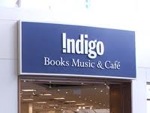
From The Globe and Mail:
…
The dual-reading consumers augur well for the future of her business, Indigo Books & Music Inc.,as it gets squeezed by the inexorable shift to e-reading.
As a result of that shift, Ms. Reisman, Indigo’s chief executive officer, has spearheaded a massive transformation of Indigo as predominantly a bookseller into what she calls a cultural department store – turning to a wider array of products for children, babies and the home.
Her reinvention notwithstanding, “the book business is still a thriving business,” she said at Indigo’s annual meeting on Wednesday. “What strikes us most significantly is the percentage of people whom we talk to and survey, who say they are reading both ways.”
The silver lining is a saving grace in a book-selling landscape that can’t hide from the harsh reality: About 18 per cent of readers already have moved to e-books from physical books, according to Indigo data. Industry projections suggest that within five years, as much as 50 per cent of books will be read digitally.
And while the projections will continue to strain Indigo’s bottom line, Ms. Reisman can find some comfort in the number of consumers who remain loyal to traditional books, even as they read some material on a Kobo or iPad as well.
…






























“What strikes us most significantly is the percentage of people whom we talk to and survey, who say they are reading both ways.”
What is significant about this ? Most titles can only be got in paper. So anyone wanting to read a range of titles is bound to read both …….
Talk about extrapolating ‘data’ into unjustified conclusions! Makes me wonder about the competency of this CEO.
The significance is that print and screen formats are interdependent for transmission of books. This is currently obvious, has been obvious and will continue to be obvious. The real issue is why and how this interdependence works.
I see no interdependence whatsoever. Digital publishing can stand on it’s own and will do so as paper dwindles and dwindles.
Given a tendency for communication technologies to merge and redefine each other we should be suspicious of reports of outright super-cession of print by screen books. What is eerie is not the conflict, but a stunning complementary fit of attributes of screen and print books. Print insularity and screen connectivity combine to encompass every agenda; those that maintain bibliographic entities and those that dissolve these entities. Print attributes of content fixity, manual navigation, and persistent access across time all pair nicely with screen attributes of live content, automated search and navigation, cloud repository, and electronic delivery. A self-authenticating nature of the print book is the perfect complement of the self-indexing nature of the screen book. Does anyone mention such a surprising, spontaneous interdependence? Can such a stunning, self-organizing media ecology ever be explained?